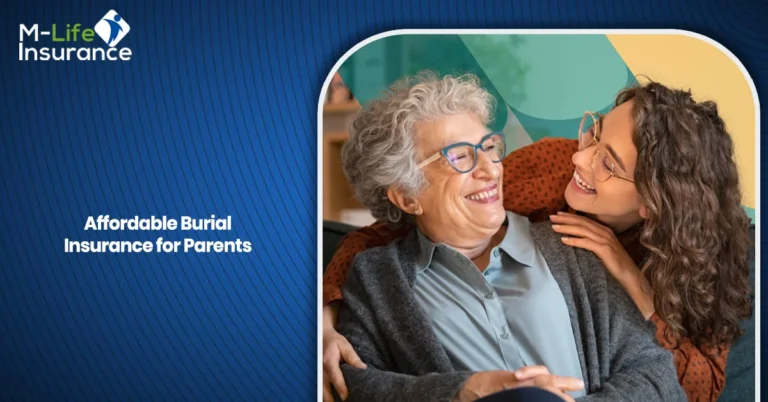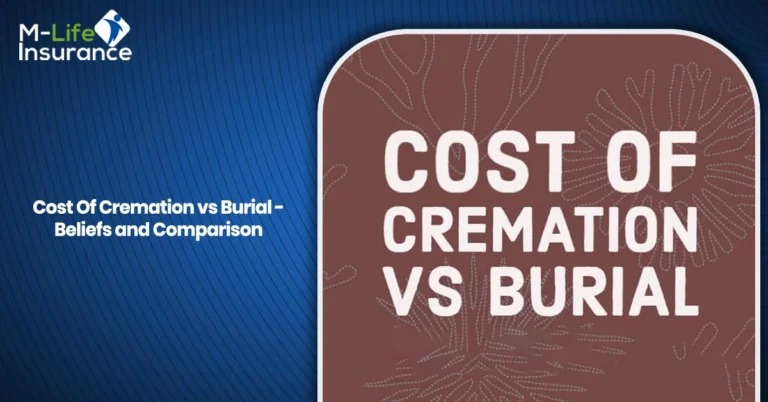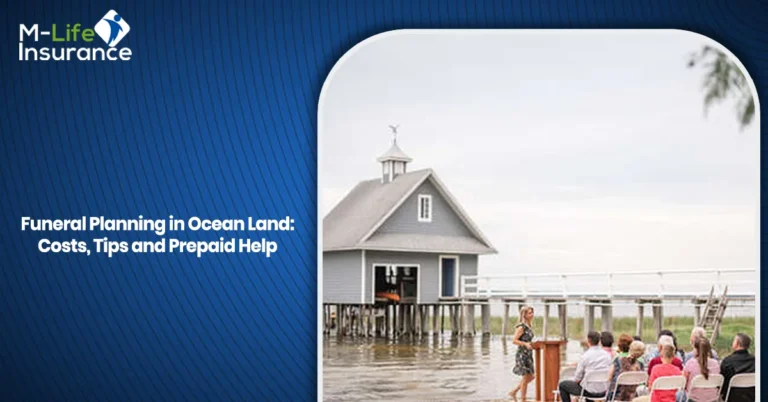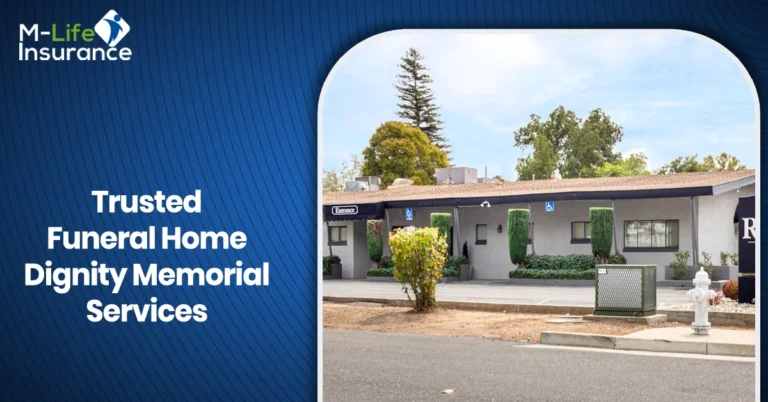Last Updated on: September 25th, 2025
- Licensed Agent
- - @M-LifeInsurance
Key Takeaways
- Affordable eco option
- Cheaper than traditional
- More natural process
- Growing in popularity
Planning a funeral can be very hard when your loved one passed away, this can be very tough both emotionally and financially. There are so many families who want something good for their family member who is passed away, and that should be meaningful but also very affordable. In the past few years, many people have started choosing green burials. These are more eco-friendly compared to traditional funerals.
One of the biggest questions people have is: How much does a green burial cost? Don’t worry about this have got you and In this guide, we will explain:
- The cost of a green burial
- The average price range
- How it compares to cremation and traditional burials
- The pros and cons
This way, you can decide if a green burial is the right option for you or your loved one.
What Is a Green Burial?
A green burial that is also called a natural burial, this burial is the type of funeral that is eco-friendly means that it is the better option for our environment. In this process of funeral there is no use of any harmful chemical that effect the environment. Instead, the body is placed in a cloth shroud or a plain wooden box that will break down naturally in the soil after some years.
Most of the time the green burial funerals are held in the special cemeteries or natural areas that protect the land. Their main goal is to focus on keeping things simple, safe for nature, and close to the earth.
How Much Does a Green Burial Cost?
The price of a green burial can change every time and it is based on where you live, what cemetery you have chosen, and the type of burial items you buy. On average:
- The estimated price of the green burial is $2,000 to $5,500
- The average expense in the U.S. is about $3,500 – $4,000
- Burial plot (cemetery space) is available from $1,000 – $4,000
- Biodegradable shroud or casket will cost you around $200 – $2,000
In short, most families spend around $3,500 to $4,000 for a green burial.
Factors That Affect Green Burial Costs
Basically, the total price of the green burial depends on where you are living, what cemetery you choose for the burial, and what burial items or services you want. But there are some things that affect the price let’s have a look at the factors for the better understanding.
Cemetery type
Some natural cemeteries cost more because they use part of the money to protect the land and keep it clean.
Burial products
A simple cloth shroud is cheaper, while a wooden casket usually costs more.
Services included
Some cemeteries will give you full packages like plot, burial, and other services, while others only sell you the burial plot.
Location
Green burials in big cities usually cost more than in small towns or rural areas.
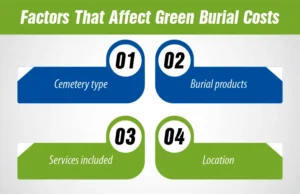
Average Cost of a Green Burial
There are so many people who are always asking and thinking about that, what is the average cost of a green burial? Lets have a better understanding from this answer
A green burial can cost different amounts depending on what option you choose. A shroud-only burial can cost you around $2,000 to $3,000. If you pick a simple wooden casket, the cost will be less. A full-service green funeral, that includes the plot, burial, and a small ceremony, is about $4,000 to $5,500. This will make green burials a more affordable option as compared to a traditional funeral, that can cost you between $7,000 and $12,000.
Cost of Green Burial vs Traditional Burial
| Type of Burial | Average Cost (U.S.) | What’s Included |
| Traditional Burial | $7,000 – $12,000 | Embalming, casket, vault, cemetery plot, service |
| Green Burial | $2,000 – $5,500 | Biodegradable casket/shroud, plot, natural service |
Cost of Green Burial vs Cremation
Cremation is the most common choice in the U.S. today because it usually cost you less.
- Direct cremation that comes with no service can cost you around $800 – $1,500
- Cremation with a memorial service will comes with around $2,000 – $4,000
- Green burial is affordable and cost you around $2,000 – $5,500
Cremation is considered as the cheaper option, but there are some families who choose a green burial instead of the cremation . This is because it is more eco-friendly and gives your loved ones a natural gravesite to visit.
How Much Does Life Isurance Cost?
Pros and Cons of Green Burials
Before making a decision, it’s important to understand the advantages and disadvantages of the green burial.
| Pros | Cons |
| Lower cost than traditional burials | Limited cemetery availability |
| Environmentally friendly means no embalming chemicals, vaults, or metal caskets | May not be accepted in all regions |
| Simple, natural, and meaningful process | Fewer options for elaborate ceremonies |
| Conservation of natural land and habitats | May cost more than direct cremation |
| Provides a lasting natural memorial | Some religious/cultural limitations |
What Makes Green Burials Affordable?
Green burials eliminate many costs tied to traditional funerals, including:
- No embalming chemicals can save around $700 – $1,200)
- No metal casket (saves $2,000 – $10,000)
- No concrete vault (saves $1,000 – $1,500)
This simplicity not only reduces expenses but also provides a more natural and sustainable farewell.
Are Green Burials Covered by Insurance?
Yes, most life insurance and final expense insurance can be used to pay for a green burial. Families just need to check with their insurance company to make sure if it covers eco-friendly funeral expenses or not.
Is a Green Burial Right for You?
Yes green burial is the most affordable and the right decision for you if you want to protect the environment but you have to make sure to understand the there are also some other values and preferences while making this decision.
- You can choose the option of green burial if you want a low-cost, eco-friendly, and natural way to say goodbye.
- If your main goal is saving money and you want more for memorials then the cremation is best option for you.
- Traditional burial is the best option if your culture or religion requires embalming and formal services.
Final Thoughts
The cost of green burials is generally lower as compared to the traditional funerals and these are a bit higher than cremation, that’s why families are choosing and making the earth green and toxins free. Before deciding anything you have to make sure that what is best, what you want and which funeral will be good for you. Always make a decision that is best for you and your family.
Plan Ahead with Mlife Insurance
A green burial is one of the most affordable and eco-friendly ways to good bye your loved one. With the right insurance plan, you don’t have to worry about unexpected costs.
At Mlife Insurance, we are here to help families cover funeral and burial expenses, including green burials, so you can focus on what truly matters, and remembering your loved one in a meaningful way.
FAQS
How long does a body last in green burial?
In a green burial, the body will naturally return to the earth. It means that it is slowly dissolves in the soil. This process can take about 10–12 years, depending on the soil, climate, and type of casket or shroud used.
How much does a green burial cost in Canada?
In Canada, the average cost of a green burial is usually in between $3,000 and $5,000, but the price can be higher in large cities and lower in smaller towns. Make sure to ask the prices before choosing.
What is the cheapest type of burial?
The cheapest option of the burial is usually direct cremation, which will cost your around $800 – $1,500. Green burials are more affordable as compared to the traditional funerals but cost a little more than cremation.
Are green burials legal everywhere?
Not everywhere. Some cemeteries and regions don’t allow green burials, so it’s important to check local rules before making a plan.
Does life insurance cover green burials?
Yes. Most life insurance and final expense insurance policies can be used to pay for a green burial. Just check with your insurance company to make sure it’s included.

Joyce Espinoza, Expert Life Insurance Agent
Joyce Espinoza is a trusted life insurance agent at mLifeInsurance.com. She’s been in the insurance industry for over ten years, helping people, especially those with special health conditions to find the right coverage. At MLife Insurance, Joyce writes easy-to-understand articles that help readers make smart choices about life insurance. Previously, she worked directly with clients at Mlife Insurance, advising nearly 3,000 of them on life insurance options.

